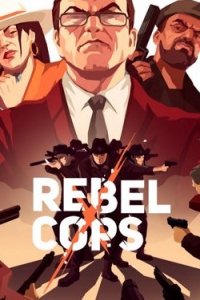

SIDE MISSION SKIPPED REBEL COPS FREE
During World War II, the Pittsburgh Courier spearheaded the Double Victory campaign, which highlighted the contributions and bravery of Black soldiers fighting to free people overseas and lobbied for expanded freedoms at home - less discrimination and segregation - for Black Americans. The great migration of Southern Black Americans to northern cities after World War I was key to the success of the Negro National Leagues. 365 hitter, Gibson’s mental health issues and premature death robbed him of a shot at the Major Leagues.)Īs one would expect, The League weaves important Black social movements into the narrative. Pittsburgh, which was on the main train line connecting East Coast cities as well as points west, was able to support another terrific Black team: The Homestead Grays, who signed away Gibson after four seasons with the Crawfords. Pittsburgh Crawfords owner Gus Greenlee launched the second iteration in 1933, the same year he signed the likable catcher Joshua Gibson. His 1930 death, combined with the Great Depression, doomed the Negro National League. Meanwhile, the teams hired hundreds of ticket-takers, vendors and ushers, fueling the local economy.įoster was disabled by gas poisoning in a hotel accident. Off the field, the effects were even more significant: Black communities proudly embraced their teams to such a degree that churches moved their Sunday services up an hour in deference to highly anticipated games. Organized Black baseball created rivalries and birthed stars. (Hake's Auction, courtesy of Magnolia Pictures) Rube Foster (center), managing the 1916 Chicago American Giants.
SIDE MISSION SKIPPED REBEL COPS SERIES
Another group formed the Eastern Colored League in 1923, and the winners of the two leagues met in the first “colored” World Series the following year. Foster became an innovative manager and owner of the Chicago American Giants, where he pioneered an aggressive style of play built on speed, base-running and squeeze bunts (in contrast to the Major Leagues’ love affair with Babe Ruth’s home run jogs).įoster’s biggest contribution, though, was persuading fellow Midwest team owners to form the Negro National League in 1920. In the leadoff spot is Andrew “Rube” Foster, a crafty Black pitcher whom New York Giants manager John McGraw reportedly hired to secretly teach future Hall of Famer Christy Mathewson the fadeaway (a.k.a. But that likely comes down to the episodic, pass-the-baton nature of the Negro Leagues’ evolution. The League is not as kinetic and enthralling as the prolific Pollard’s recent Sammy Davis, Jr.: I’ve Gotta Be Me (2017) or last year’s Lowndes County and the Road to Black Power. Umpire Bob Motley in the air, in a still from ‘The League.’ (Byron Motley, courtesy of Magnolia Pictures) Meshing the recollections of numerous players and Negro League umpire Bob Motley (who died in 2017), a wealth of splendid vintage footage and interviews with young Black historians, it’s a solid double in the gap that fans of the game will enjoy even more than devotees of American social history.

In most tellings, Negro League stars like Buck O’Neill, Josh Gibson and Satchel Paige are tragic figures: They were robbed of the opportunity to compete against Joe DiMaggio, et al, and to join the firmament of household names on the sports pages, in the record books and at Cooperstown.Ī parallel history of baseball from a Black point of view, Sam Pollard’s fleet-footed, feature-length The League offers a perspective that acknowledges segregation and racism - yet is closer to a house party than a lament. Everybody knows that baseball - the dominant sport in America for two-thirds of the 20th century - excluded Black players from its major leagues for decades, from the turn of the century until Jackie Robinson broke through in 1947.


 0 kommentar(er)
0 kommentar(er)
